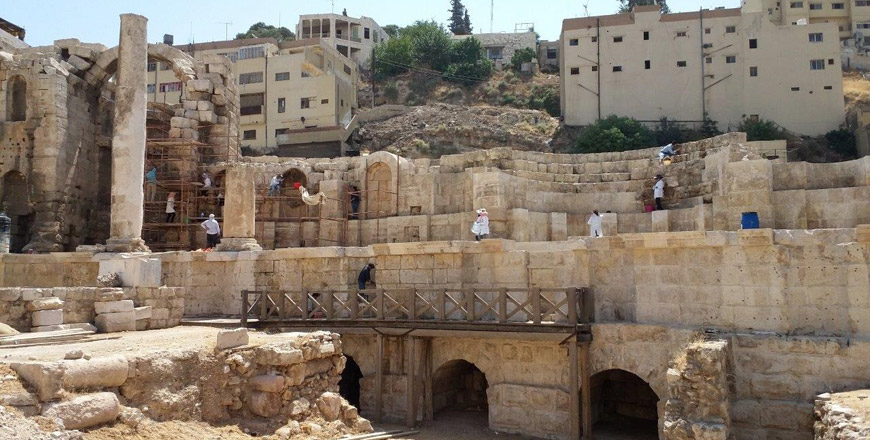AMMAN — The United States’ Ambassadors Fund for Cultural Preservation (AFCP) has awarded 15 small grants and one large grant with additional continuation fund to preserve important archaeological sites in Jordan, totalling $1,880,441 since 2001.
"The AFCP is currently funding the second phase of the restoration of the Roman Nymphaeum in downtown Amman, the conservation and rehabilitation of the Roman aqueduct of Gadara in Um Qais and the second phase of conservation of the Temple of the Winged Lions in Petra," said Cultural Affairs Officer at the US embassy Tobias Bradford.
The US embassy in Amman, through its Cultural Affairs Office, manages the AFCP programme.
"Hopefully, AFCP will be able to support an additional project in Jordan in 2017," Bradford noted.
At the global level, AFCP operates in over 100 developing countries to support the preservation of heritage sites, cultural objects and various forms of traditional cultural heritage.
AFCP-supported projects include "the restoration of ancient and historic buildings, assessment and conservation of rare manuscripts and museum collections, preservation and protection of important archaeological sites, and the documentation of vanishing traditional craft techniques and indigenous languages," Bradford noted.
"As the office responsible for the AFCP, our mandate is to find opportunities, in cooperation with local authorities, to fund the conservation and restoration of cultural sites, cultural objects and collections, and forms of traditional cultural expression," he explained.
The key element of the programme's success has been the close cooperation with the Department of Antiquities (DoA) and Ministry of Tourism and Antiquities, as well as other actors in cultural preservation in Jordan, he added.
"These partnerships are crucial to our support for Jordan’s efforts to not only preserve its remarkable cultural heritage, but also to ensure that the projects support Jordan’s economic growth, tourism promotion and the development of the communities that surround major historical sites," Bradford continued.
AFCP partnered with USAID’s Sustainable Cultural Heritage through Engagement of Local Communities Project programme, which has strengthened these objectives significantly over the past three to four years, he emphasised.
The successful implementation of projects financed by AFCP has enabled local communities to increase their economic activity, Bradford pointed out.
AFCP has given more than half of its funding to local organisations, and all projects require a credible, capable local partner and authorisation from the DoA, Bradford clarified.
"We are extremely pleased with the performance of local partners and we have seen their capacity to take on projects independently grow," he underlined, noting that the preference of AFCP, whenever possible, "is to support the work of Jordanian institutions — and their results speak for themselves."
The restoration of the Roman Nymphaeum project in the downtown Amman is a “classic example” of a highly cost-effective, well-executed AFCP project that has been run by the Hamdi Mango Centre, in partnership with the University of Jordan, the Greater Amman Municipality, and the DoA, Bradford highlighted.
"In addition to preserving an important historic site, this project will become one of the cornerstones of a revitalised downtown Amman," he underscored.
